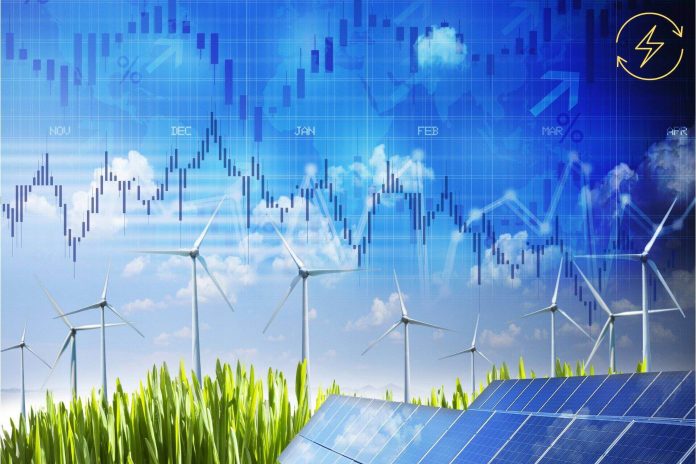The energy crisis that began in February 2022 shook up the entire world and all the analyses indicate that it will last for quite some time. The Russian aggression against Ukraine and the use of fossil energy sources as a blackmailing weapon caused a drastic price rise of energy. This growth of prices hit the EU hardest and has thus forced it to accelerate the development of renewable energy sources and hasten the realization of energy independence. The crisis affected Croatia as well and thereby reminded us of the importance of using the enormous domestic potentials of renewable energy sources. If we had included them on time to a greater degree in the production of energy we would be less dependent today on its import at exceptionally high prices.
The production, consumption and import of energy are shown in the analyses worked out by engineer Marko Lovrić on the basis of publicly available data from the websites of HEP, HOPS, HROTE, CROPEX, NE Krško, ENTSO, DZS, RTE France, RED Electrica, World Data, IEA, EEX and EPEX. He used them in drawing up the analysis of electric energy trends in 2022, the previous period and for the month of December. Although the data for the first ten months are aligned with DZS, the analyses for November and December was made according to HOPS data, so therefore the report for 2022 is preliminary.
High rise of electric energy prices in 2022
The average price of electric energy in the twelve months of last year was 273.72€/MWh and was higher by 159.14€ /MWh as compared to the same period last year. Therefore, in just a year the price of electric energy rose by an astonishing 239%
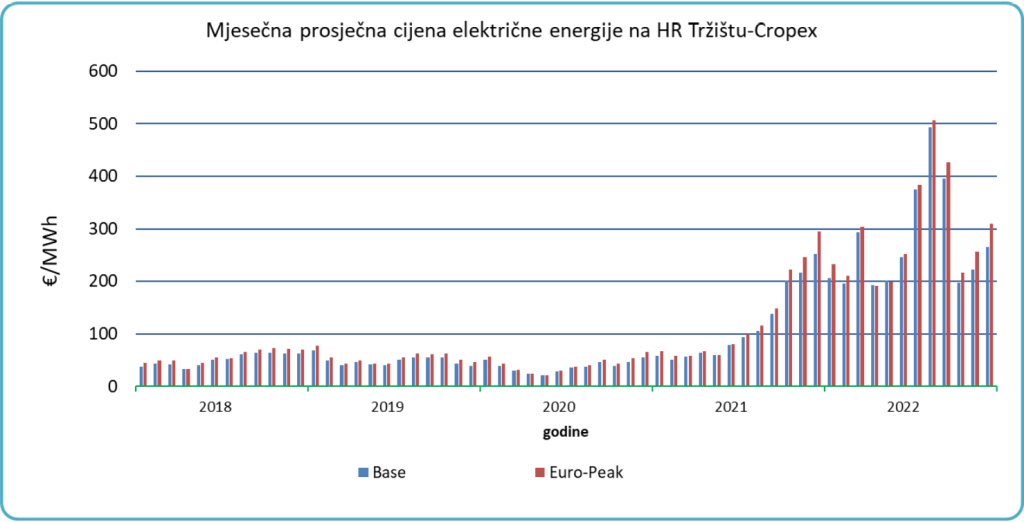
The price of electric energy in December 2022
The average hour price of electric power in December last year amounted to 264,22€/MWh and was 12.10€/MWh higher than in December 2021. In mid-month at the system’s load peak the prices of electricity were higher than 600€/MWh while at the end of the year they were under 10€/MWh.
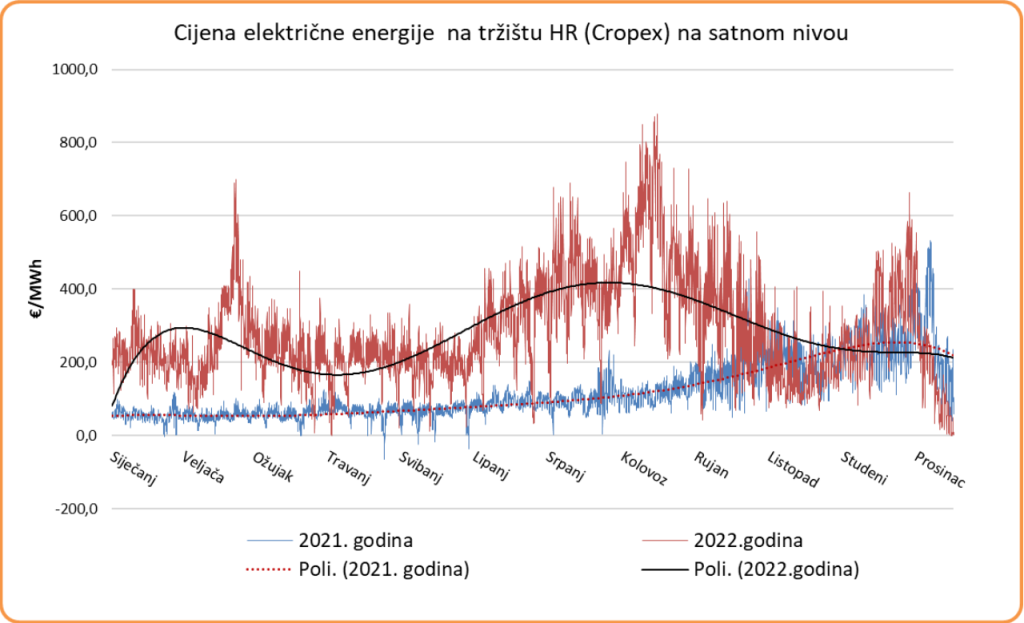
Electric energy consumption trends
The consumption of electric energy in 2022 amounted to18.416 GWh and was lower by 131 GWh than in 2021. The consumption of electric energy in December of this was 1.598, namely, lower by 121 GWh in relation to the same month in 2021. The reason is warmer weather and consequently the decreased need for heating.
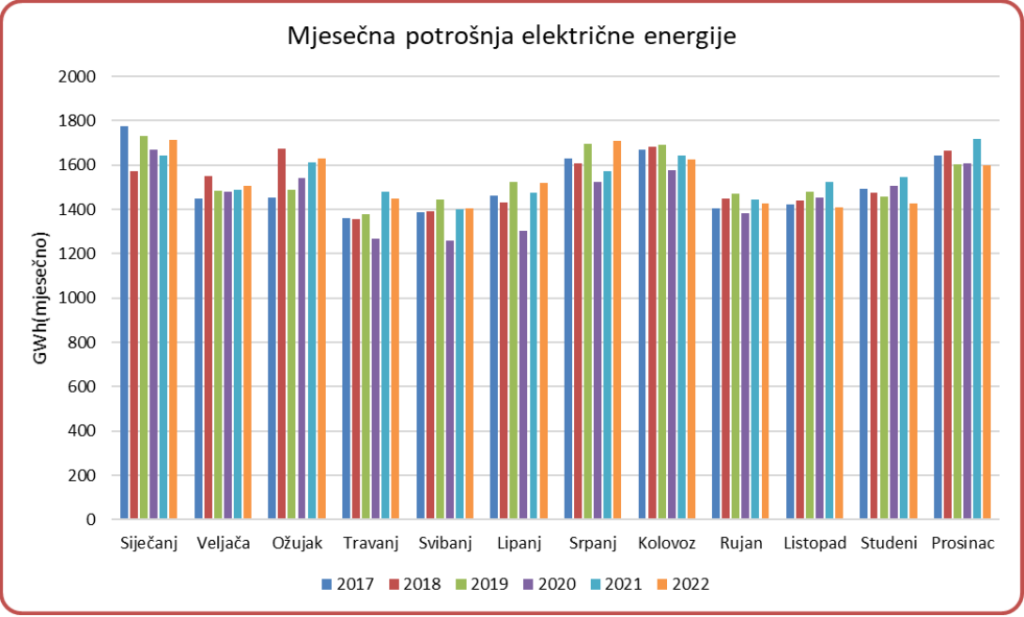
Import and production of energy from renewable sources
If we look at the structure of the electric energy balance in the period from 2000 to 2022 the growth of energy production from renewable sources can clearly be depicted as well as the volatility in the production of electric power plants having as a consequence the increased production of thermal electric plants and import of electricity.
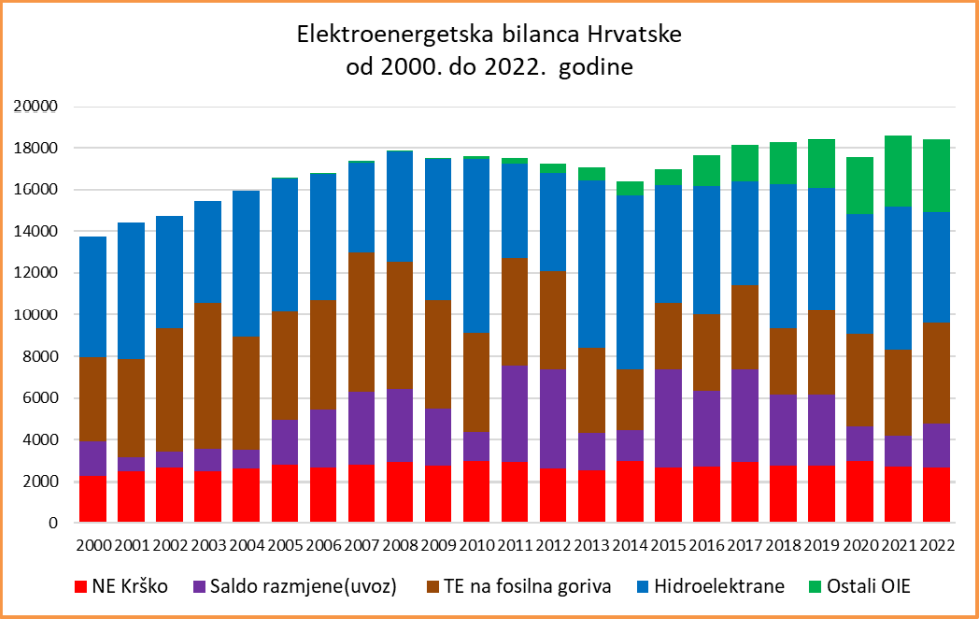
If we view the balances in the period from 2018 to 2022 we can see that the average annual import of electricity in the given period amounted to 2340 GWh.
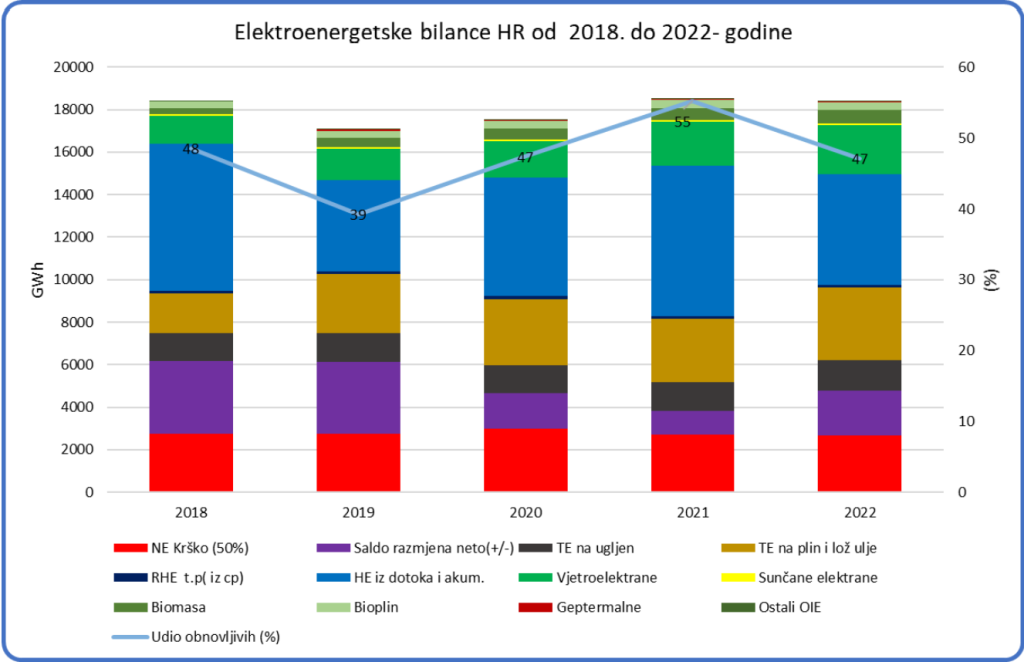
In order to produce such amounts of energy in Croatia and stop its import would require solar plants with a capacity of 2000 MW. Presently we dispose with a capacity of only 280MW.
We could achieve the same thing with the construction of 1000MW capacity new wind farms that would enable a more balanced electric energy balance. It is necessary to use as soon as possible the potential Croatia has in all forms of renewable energy and promote its speedier development.
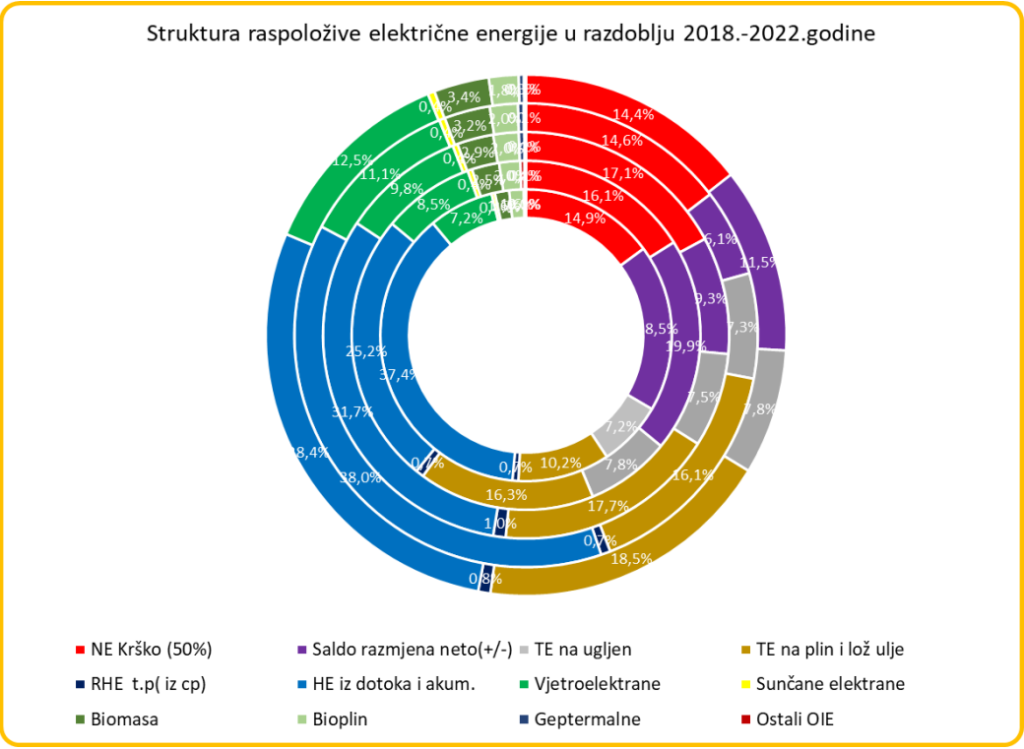
It is encouraging that in the last four-year period, there is a visible growth of the share of renewable energy sources in the structure of available energy in Croatia, before all wind farms and biomass plants.
The structure of available energy in 2022
In the structure of available electric power in 2022 the greatest share was achieved by hydroelectric plants, which produced a total of 5.229 GWh of electricity, namely, achieved a share of 28.39 percent. They are followed by thermal electric plants on oil and fuel oil with a production of 3406 GWh and the nuclear power plant Krško with 2656 GWh of produced electric power.
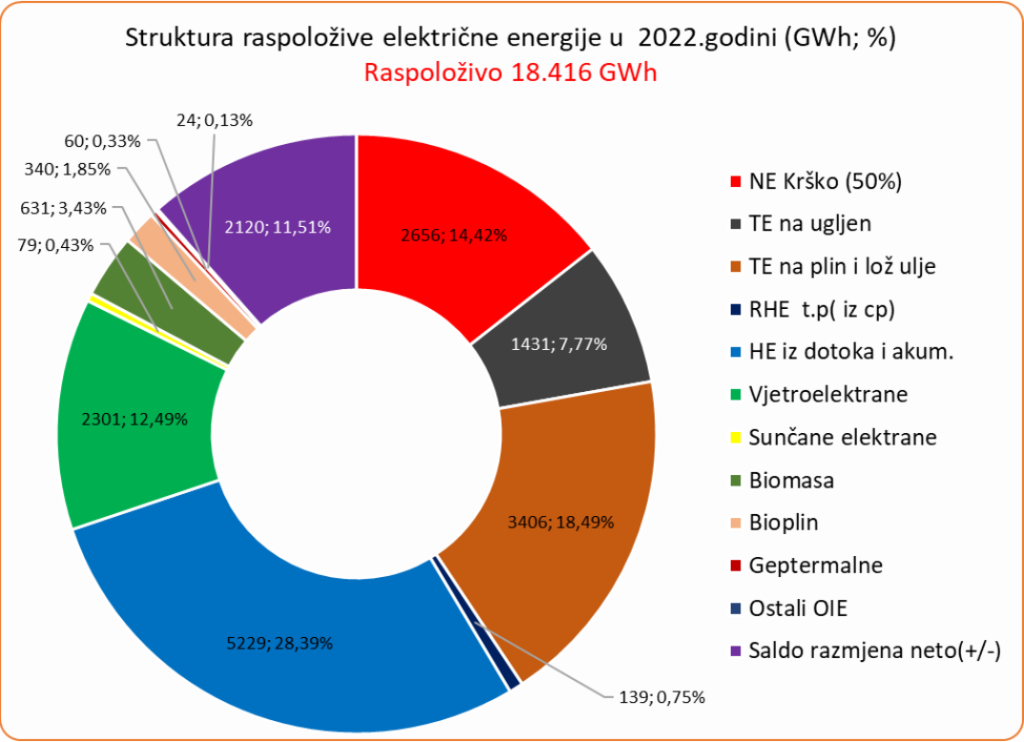
Solar plants produced only 79 GWh and participated with 0.43 percent in the overall structure of available energy. Plants on biomass and biogas jointly produced 971 GWh of electricity. Biogas plants are exceptionally important for the production of biogas which in its purified form becomes bio methane, a very sought after energy source that can substitute fossil gas. In 2022 the European Union enhanced the goals of bio-methane production precisely with the objective of lowering the dependence on imported gas.
Wind energy
In 2022 windfarms produced 2.301 GWh of electricity which is a share of 12.49 percent in the overall energy structure- On average it was 262.7 MWh/h, while the power utilization factor was 26.8 percent, which is lower than the multiyear average of 27.2%.
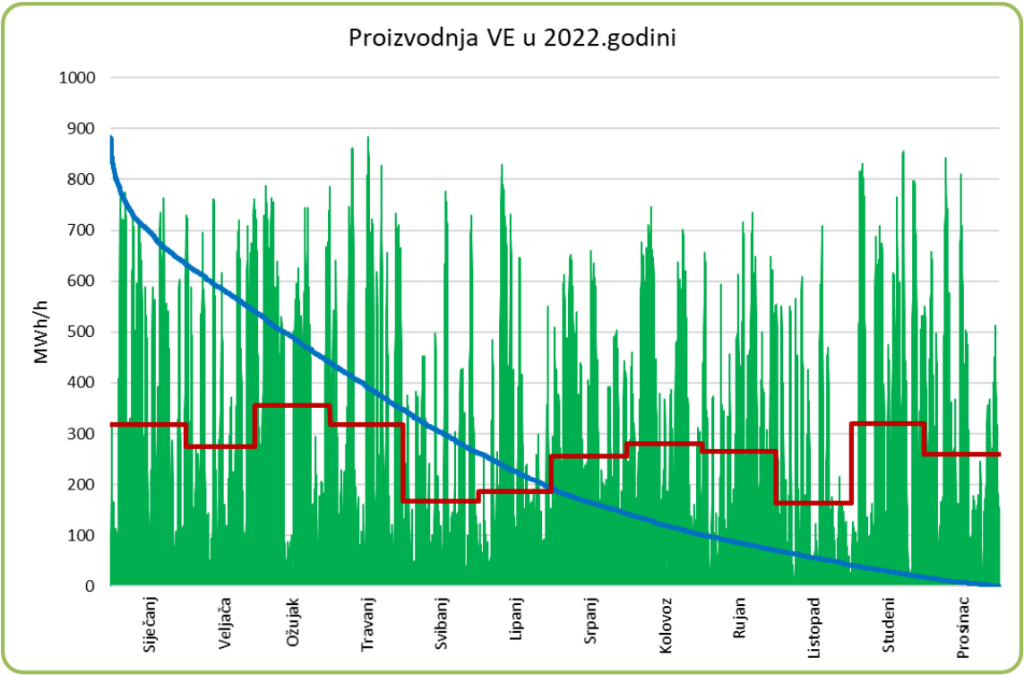
Available electric energy in December 2022
Due to the increased production of hydroelectric plants the net export of 112 GWh of electricity was registered in December. In the course of 2022 the net import amounted to 2.120 GWh. A large physical transit of electric power was achieved through HOP’s high voltage grids toward the neighboring regulatory regions, namely, 26 percent of the overall turnover in 2022 which resulted in increased losses in the Croatian transmission grid.
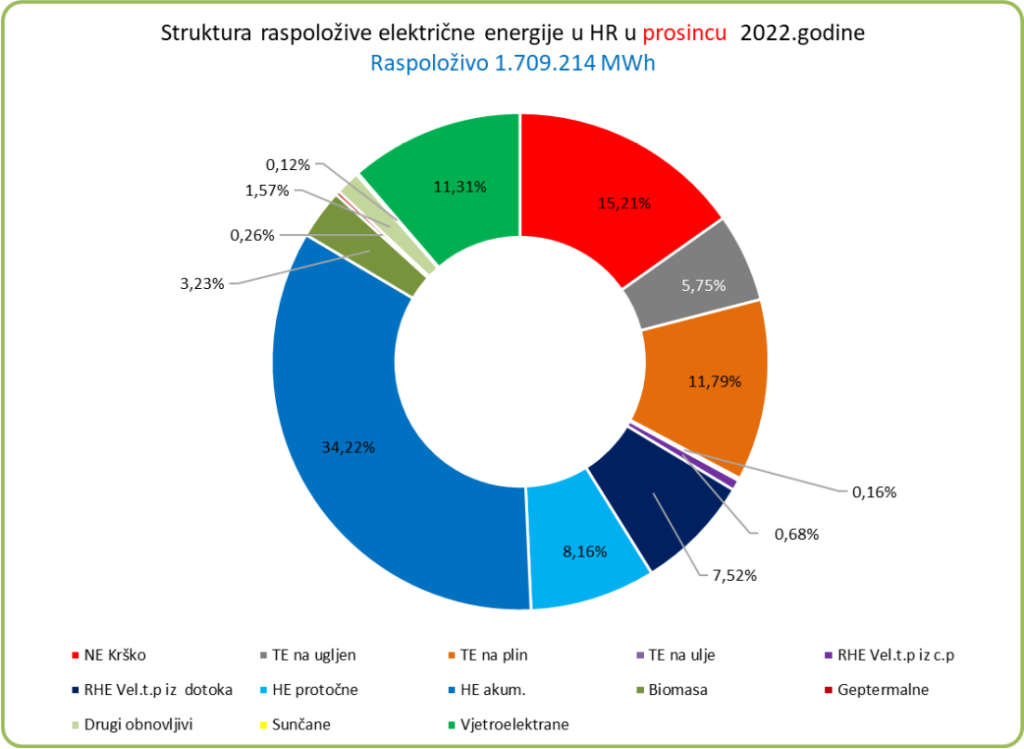
The overall production of wind farms in December amounted to193 GWh, while the factor of power usability was 26.5 which is considerably lower than average. The average production of wind farms in December was 259.7 MWh/h and the maximum was achieved by the production of 843 MWh/h in the first half of the month.

The maximum wind farm hour production “upwards” in December of this year amounted to to 172 MWh/h and “downwards” to 260 MWh/h.
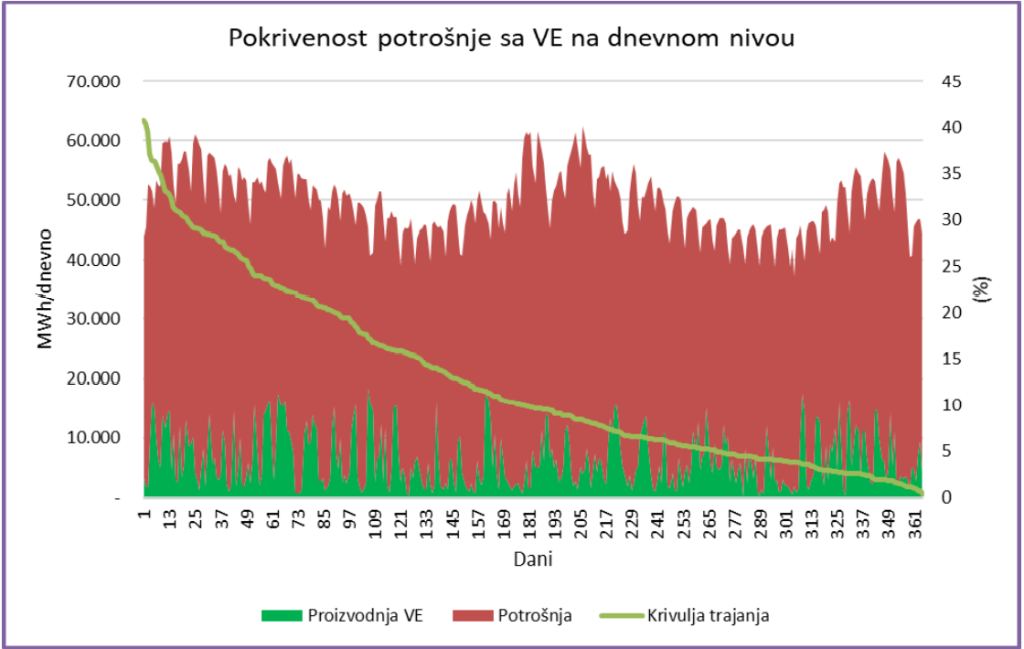
The analysis also showed that a wind farm in the course of a day on average produces most of the electric power at night, between 8pm and 8am, beyond Euro-Peak market prices.
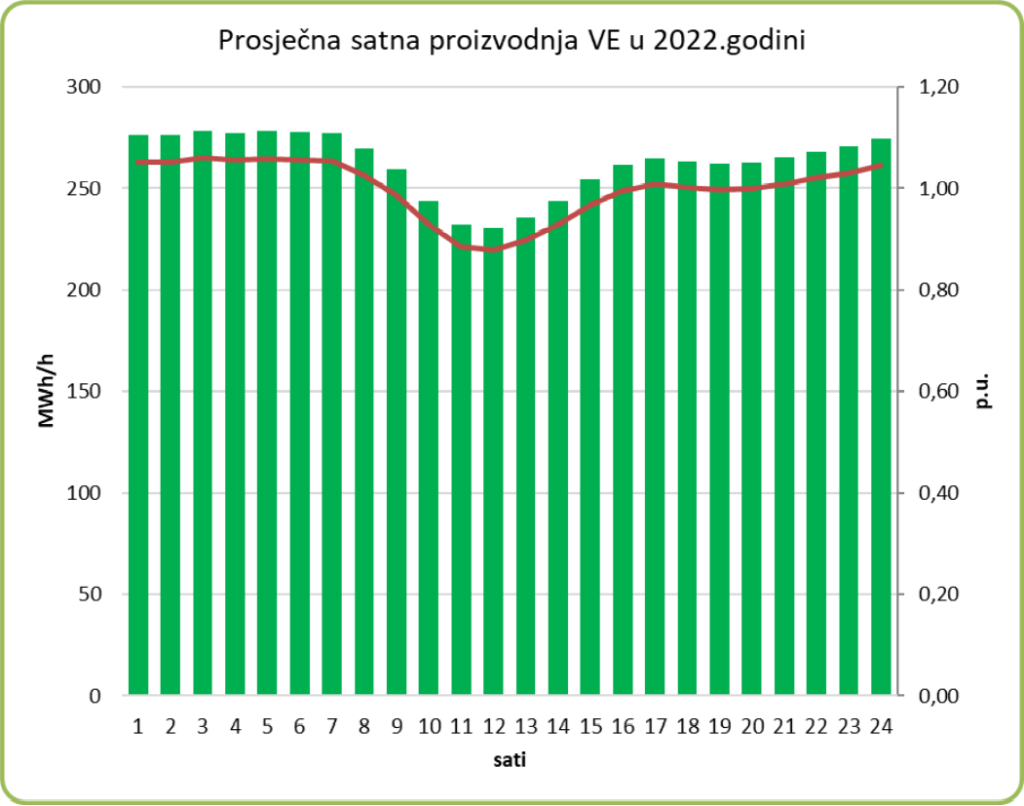
Share of production from RES in 2022
In the structure of available electric power, in December renewable sources participated with 71 percent and accounted for 528 hours of consumption in the same month. It is clear that we export most of the energy in summer when with the help of energy from the sun we could satisfy most of Croatia’s energy needs and export the produced surpluses. However, we are still among the lowest ranking countries in Europe in terms of using the energy of the sun and that is one of the reasons why fossil energy makes up 53 and renewable 47 percent in the structure of available energy in 2022.
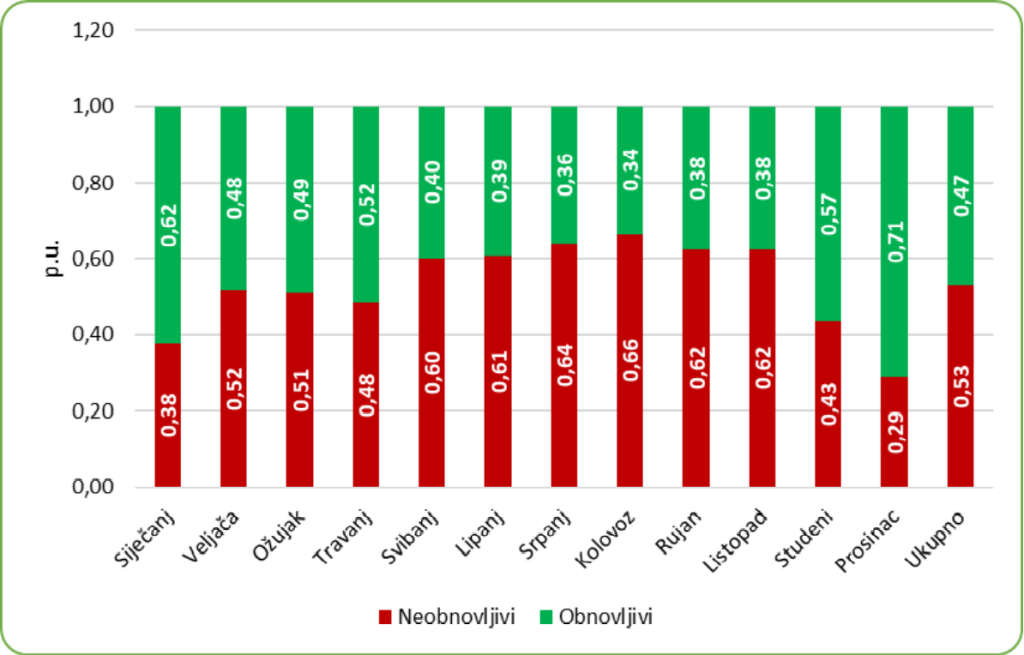
The question of the development of renewable energy sources in 2022 has become the question of national energy security. In comparison with other member countries of the European Union Croatia has relatively quickly and appropriately reacted to the crisis, and some analysts have predicted that we can come out of the crisis as a winner if we turns to the faster development of renewable energy sources.


